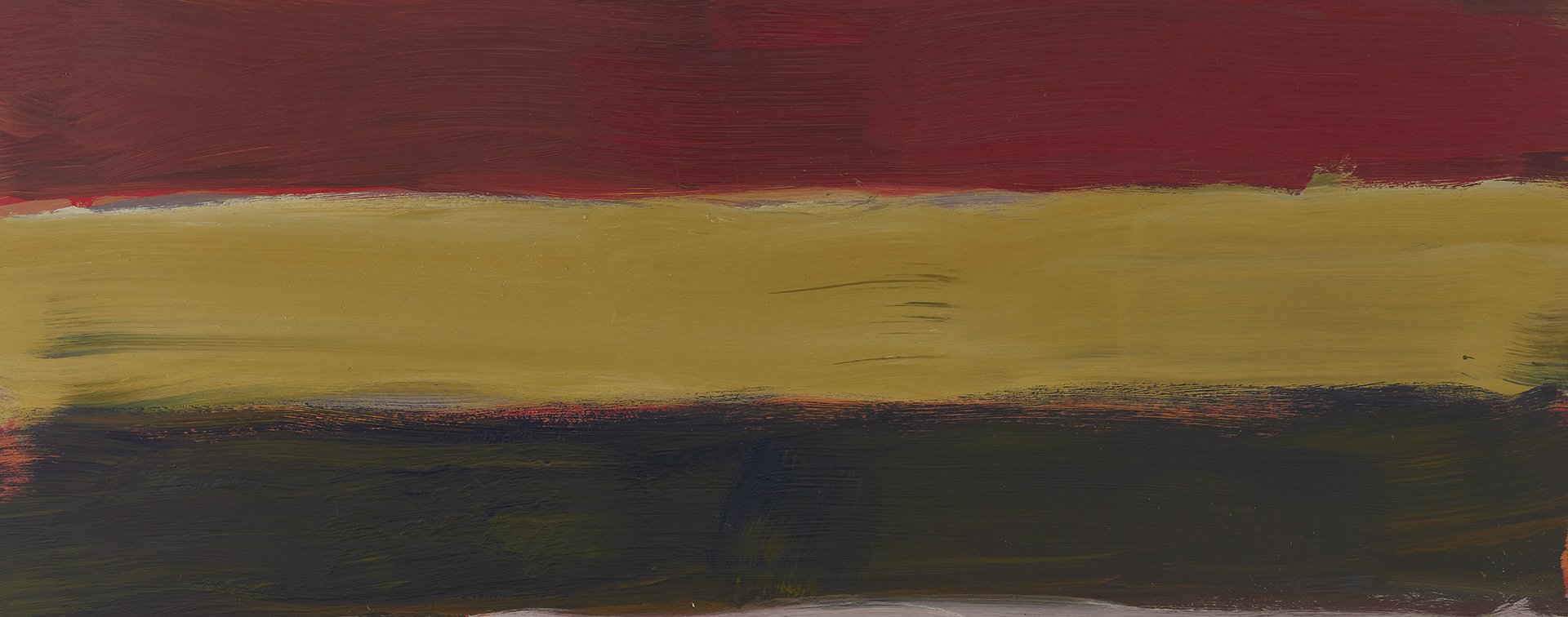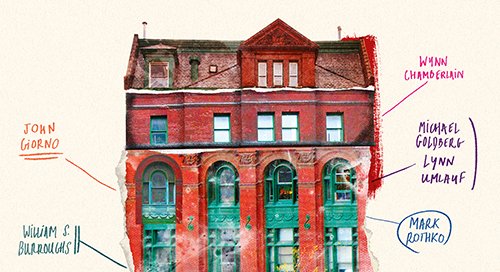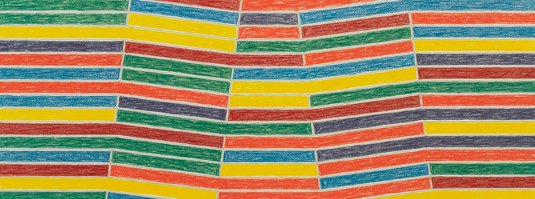
Sean Scully : a romantic geometry of colors
Sean Scully is widely recognized for his broad, colorful bands, often segmented and with vibrant edges, that structure his frequently large-format paintings. This visual language, developed in the 1980s and refined over the subsequent decades, has earned Scully's work significant international acclaim. The exhibition at the Centre Pompidou is notable for juxtaposing some of these iconic paintings with works from the 1970s and early 1980s.
After studying in London, continuing his education at Harvard, and traveling to Morocco, where he was deeply influenced by the local textiles, Sean Scully (born in Dublin in 1945) moved to New York in 1975. At that time, his work was influenced by a blend of op art—epitomized by the British artist Bridget Riley—the legacy of American Abstract Expressionism, particularly Mark Rothko, and minimalism. The retinal intensity of "Green Light" (1972-1973) still reflects the impact of op art. In Hidden Drawing #2 (1975), the pictorial space flattens, and the optical effects of depth diminish, even though the interplay of colored lines continues to engage the public's visual perception.
By the end of the decade, a certain chromatic austerity began to dominate Scully’s palette, signaling his dialogue with American minimalism. His large vertical painting Upright Horizontals Red Black (1979) could be placed alongside the famous Black Paintings of both Ad Reinhardt and Frank Stella, although the fine red lines that run through Scully's work animate it with a muted chromatic vibration. Significantly, at this point, Scully switched from acrylic to oil paint, which imbued his work with greater sensuality.
Josef Albers's experience in Mexico and his exposure to pre-Columbian art and architecture played a pivotal role in shaping his oeuvre. From 1935 until the late 1960s, Albers visited Mexico frequently. Mexico likely had a similar impact on Scully's painting. In the early 1980s, Scully made the first of many trips to the country, which coincided with his gradual departure from geometric rigor and the modernist grid. Reflecting on this phase of his career, Scully stated that his aim at the time was to "save abstraction." Save it from what? From minimalistic literalism, from form that refers to nothing beyond itself. To this end, Scully consistently prioritized rhythm over form—arguably the most enduring aspect of his engagement with op art. The broad bands that structure his canvases vary in width, their edges are blurred, and they do not all follow the same direction—some are vertical, others horizontal. This approach reveals Scully's emphasis on disharmony and his fundamental mistrust of unity and harmony, as exemplified by works like By Night and by Day (1983) and Mariana (1991), with its two "inserts" proposing a new version of the painting within the painting.
Scully’s painting is similar to Cézanne-like primarily because it is conceived as a painting of sensation.
If there is one aspect of Scully's painting that most clearly rejects literalism and self-referentiality, it is undoubtedly his use of color. Over time, his colors have become increasingly nuanced and complex, leading to the chromatic achievements of the last two decades, as seen in works like Doric Sky (2011), Landline Far (2020), and Plough (2023). These works solidify Scully's reputation as one of the greatest colorists of our time. Each band of color in his paintings contains multiple shades within itself.
"I seek to make what we feel visible", Scully says, echoing the spirit of Cézanne, in whose city he plans to spend more and more time. As art historian Pascal Rousseau rightly pointed out, "There is, in Cézanne's approach to painting Mont Sainte-Victoire, a highly material treatment of brushstrokes that inspires Scully in his abstract works". Scully’s painting is similar to Cézanne primarily because it is conceived as a painting of sensation. He presents his canvases as, in a sense, "unresolved." Only the sensations, emotions, and feelings that arise within the viewer can bring them to resolution. ◼
Related articles
In the calendar
Sean Scully, Landline Far, 2020
© Sean Scully
Photo © Courtesy of the artist studio & Galerie Thaddaeus Ropac/Charles Duprat







